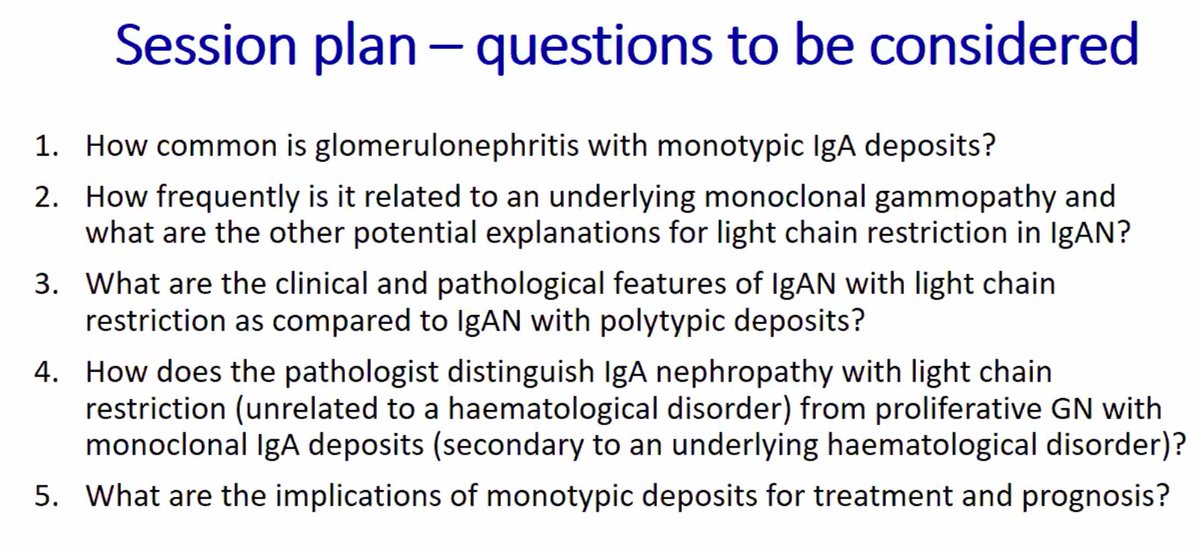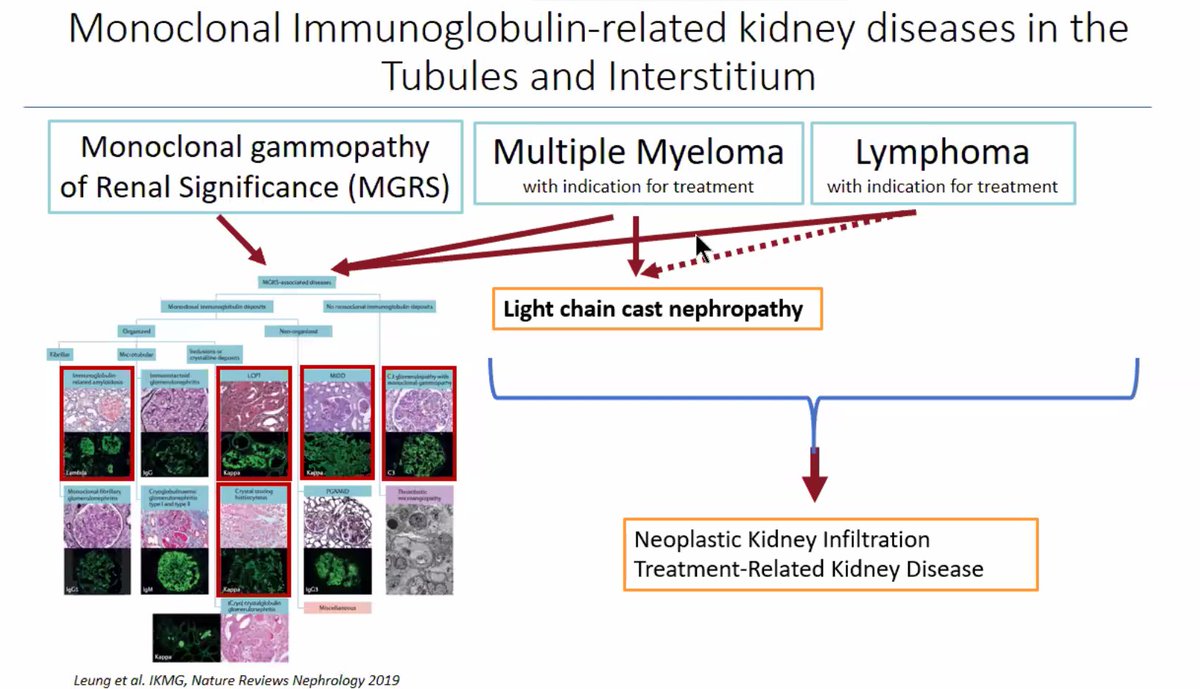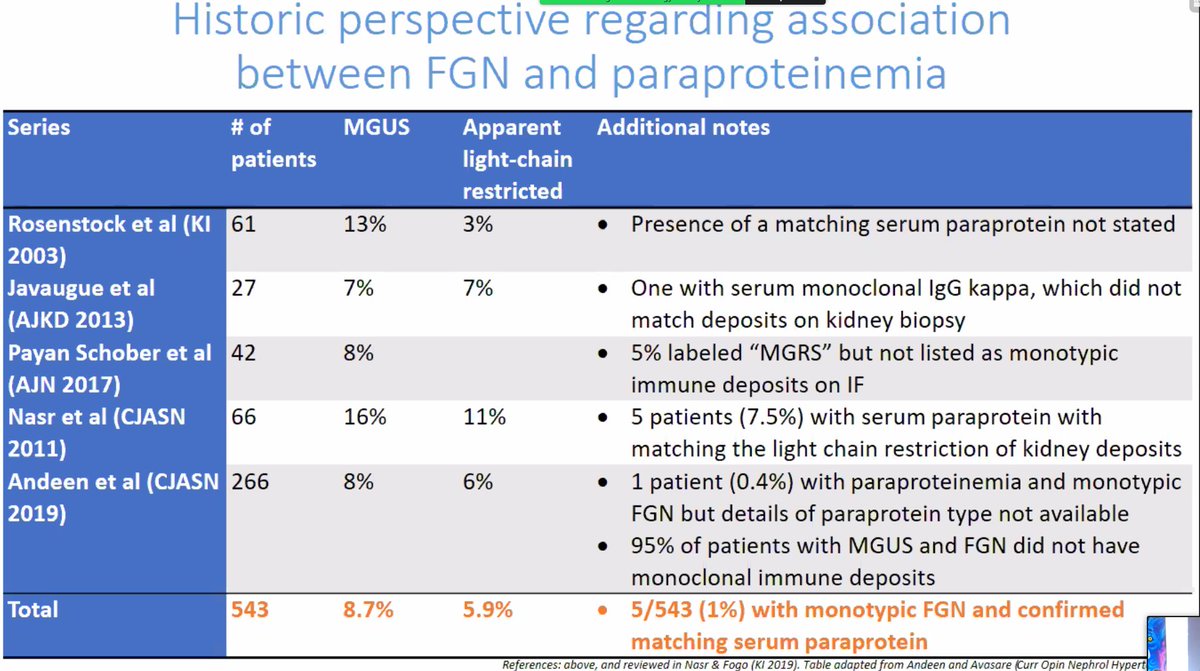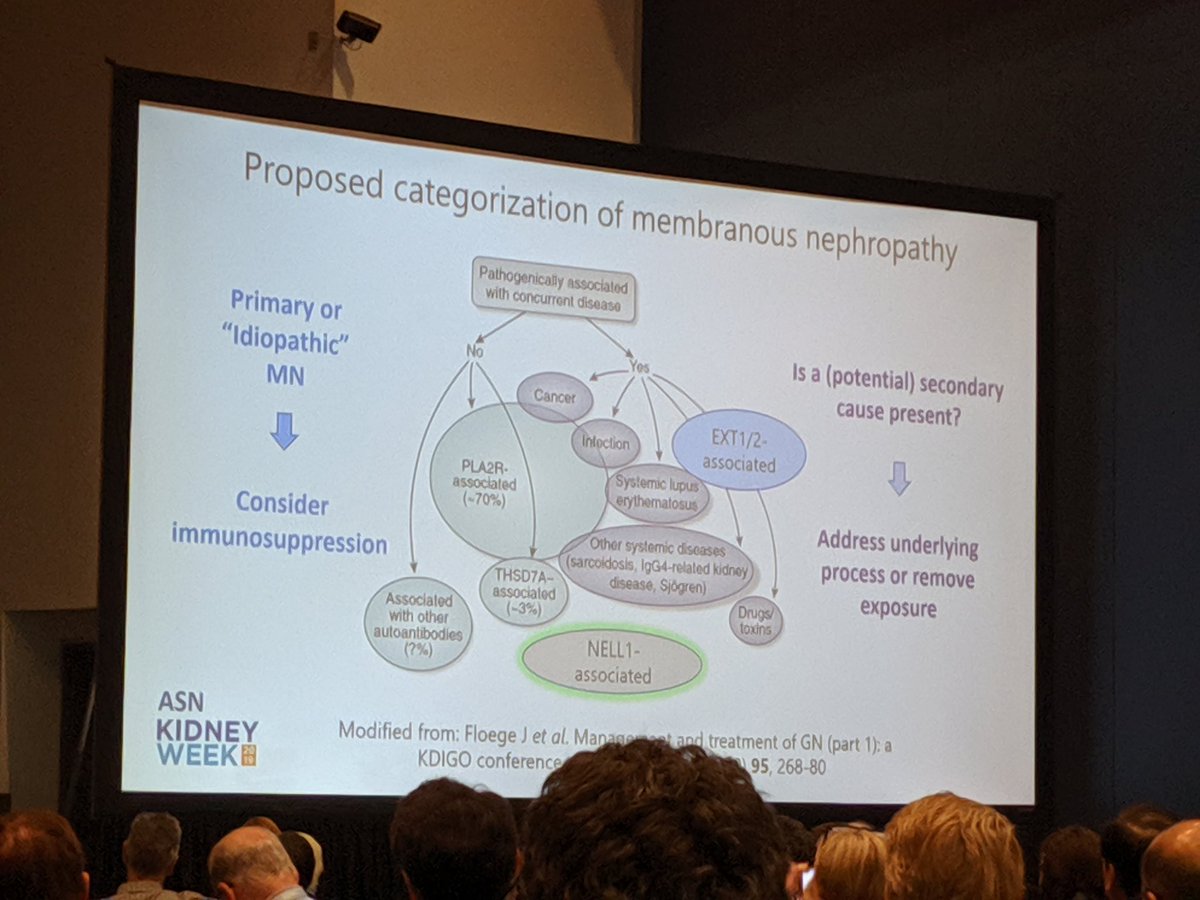
I'm a kidney pathologist, researcher, and organ donation advocate here to learn and connect. I work @arkanalabs, but tweets are my own opinion.
2 subscribers
How to get URL link on X (Twitter) App


 2. CKDu is prevalent, particularly in areas of the world with a high heat index.
2. CKDu is prevalent, particularly in areas of the world with a high heat index. 


 Light chain restriction in IgA nephropathy is not rare, but nearly always involves lambda light chain. The frequency is between 2 and 38.5% - quite a wide range between studies.
Light chain restriction in IgA nephropathy is not rare, but nearly always involves lambda light chain. The frequency is between 2 and 38.5% - quite a wide range between studies. 

 Clinical presentations can be variable, but often include proteinuria +/- AKI, as well as evidence of tubular dysfunction (including Fanconi syndrome).
Clinical presentations can be variable, but often include proteinuria +/- AKI, as well as evidence of tubular dysfunction (including Fanconi syndrome). 

 Only 1% of monotypic fibrillary GN cases have an identifiable matching monoclonal paraprotein.
Only 1% of monotypic fibrillary GN cases have an identifiable matching monoclonal paraprotein. 

 PGMID is the second most common type of MGRS lesion on kidney biopsy but is a rare disease overall.
PGMID is the second most common type of MGRS lesion on kidney biopsy but is a rare disease overall. 

 SGLT2 proteins were studied for the last 30 years, although modern SGLT2 inhibitors were under development only in this last decade. /1
SGLT2 proteins were studied for the last 30 years, although modern SGLT2 inhibitors were under development only in this last decade. /1 

 In 1991, the Banff working group was formed. Ever since then, a group of experts (likely many members of the @renalpathsoc) meet every 2 years to discuss and refine the classification for allograft rejection.
In 1991, the Banff working group was formed. Ever since then, a group of experts (likely many members of the @renalpathsoc) meet every 2 years to discuss and refine the classification for allograft rejection. 
 The focus of immunosuppression in this talk was primarily in targeting T cells. There are 3 signals required for T cell activation - TCR engagement with MHC, co-stimulatory signals, and action of cytokines. /2
The focus of immunosuppression in this talk was primarily in targeting T cells. There are 3 signals required for T cell activation - TCR engagement with MHC, co-stimulatory signals, and action of cytokines. /2 

 Podocyte ultrastructural changes - there are changes occurring in podocytopathies other than just foot process effacement, such as actin cytoskeleton condensation, microvillous transformation, blunting, widening, and 'halo' formation. /2
Podocyte ultrastructural changes - there are changes occurring in podocytopathies other than just foot process effacement, such as actin cytoskeleton condensation, microvillous transformation, blunting, widening, and 'halo' formation. /2 


 2. Patient survival is poor following graft failure (by any cause) with a >3-fold increase in mortality.
2. Patient survival is poor following graft failure (by any cause) with a >3-fold increase in mortality. 

 This technology is pretty new - here's a timeline of discoveries in gene expression testing in allografts. /2
This technology is pretty new - here's a timeline of discoveries in gene expression testing in allografts. /2 

 For chronic antibody mediated rejection, you can see these patterns (not all need to be present). /2
For chronic antibody mediated rejection, you can see these patterns (not all need to be present). /2

 There are nearly a half a million deaths from COVID-19 currently and 228 billion infections./2
There are nearly a half a million deaths from COVID-19 currently and 228 billion infections./2 

 We used protein G immunoprecipitation to elute immune complexes directly from frozen kidney biopsy tissue and interrogated them by mass spectrometry. 2/21
We used protein G immunoprecipitation to elute immune complexes directly from frozen kidney biopsy tissue and interrogated them by mass spectrometry. 2/21 
